SUMMARY
This is AI generated summarization, which may have errors. For context, always refer to the full article.
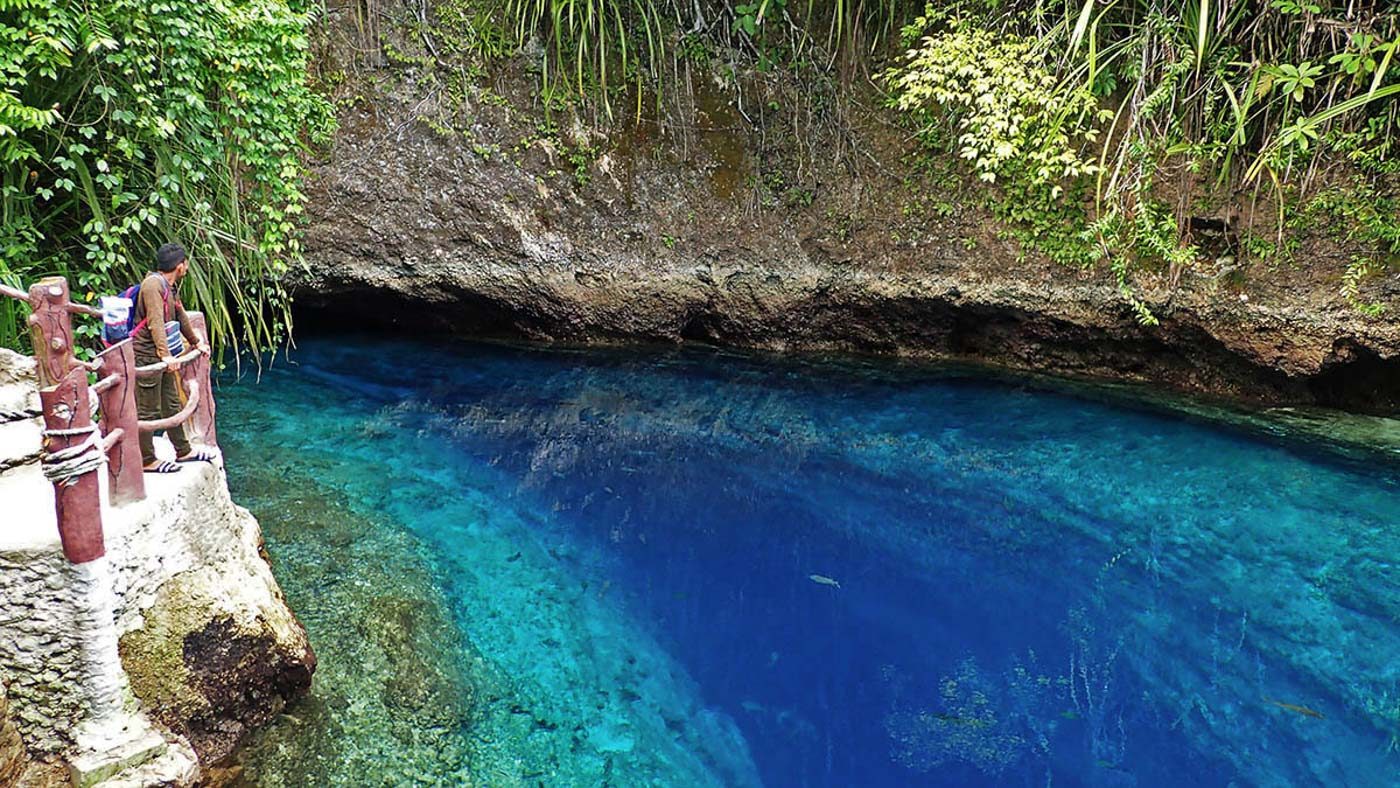
All throughout the day, the water of the Enchanted River’s Blue Lagoon is still, its surface unbroken, save for noontime, when the river’s long-time caretaker rides a boat into the deep blue and throws chopped squid and cooked rice to the lagoon to feed the fish, and to appease the river spirits.
Around 10 meters away from the Blue Lagoon, secured with rope and floaters, is the swimming area for tourists. The surrounding viewing decks and cottages are only for sightseeing.
The local government and the community, in their efforts to preserve the beauty of the river, moved the parking area, food stalls, and other facilities at least 300 meters away from the river.
It was not always this way. A few years ago, on peak season especially, thousands would visit the Enchanted River, many jumping into the Blue Lagoon, cooking food or buying from the surrounding stalls then throwing leftovers into the water for the fish to feed on.
“The Blue Lagoon is as big as an Olympic-size pool,” Shem Garay, the mayor of Hinatuan, the municipality Enchanted River is part of, said. “Imagine thousands of people waiting for their turn to swim there.”
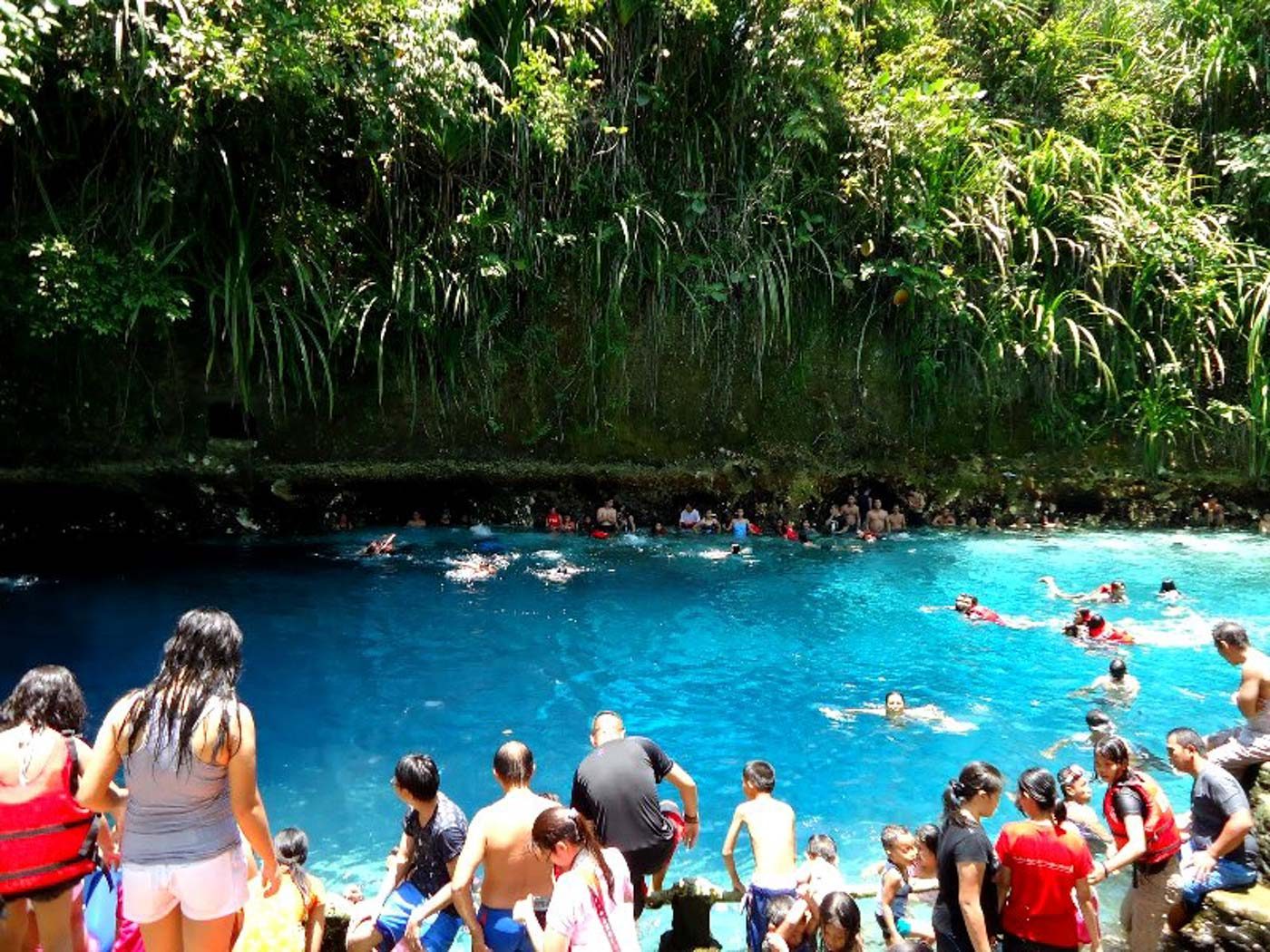
At the depths of the Blue Lagoon is an underwater cave also affected by erosion from swimming activities and threatened by a possible collapse from the pressure of nearby parked vehicles.
The local government realized that the situation had to change.
River history and legend
Enchanted River was named as such from a local’s poem, “Rio Encantado” (Enchanted River).
Prior to the Second World War, Modesto Farolan wrote the poem for his lover, and described the river as a place for lovers’ trysts, with “crystalline stream flowing from the hidden spring,” with a “canopy of rich green mirrored in water-tinted blue,” among others.
The river’s waters come from Hinatuan’s mountains. During low tide, the Blue Lagoon provides a clear view of the opening to the underwater cave and its dark blue depths. The Blue Lagoon is called as such because of its color and stillness.
According to locals, mystical spirits and creatures like fairies live in the river. Urcesino Oranza, who has been in charge of the fish feeding in the river for nine years now, said that he has seen a lady in white. There are also other reports among locals of other mysterious sights.
Out of respect to these spirits, the fish feeding is a regular activity, and visitors are only allowed in the river up to 5 pm. (READ: The enchanting blue river of Hinatuan, Surigao del Sur )
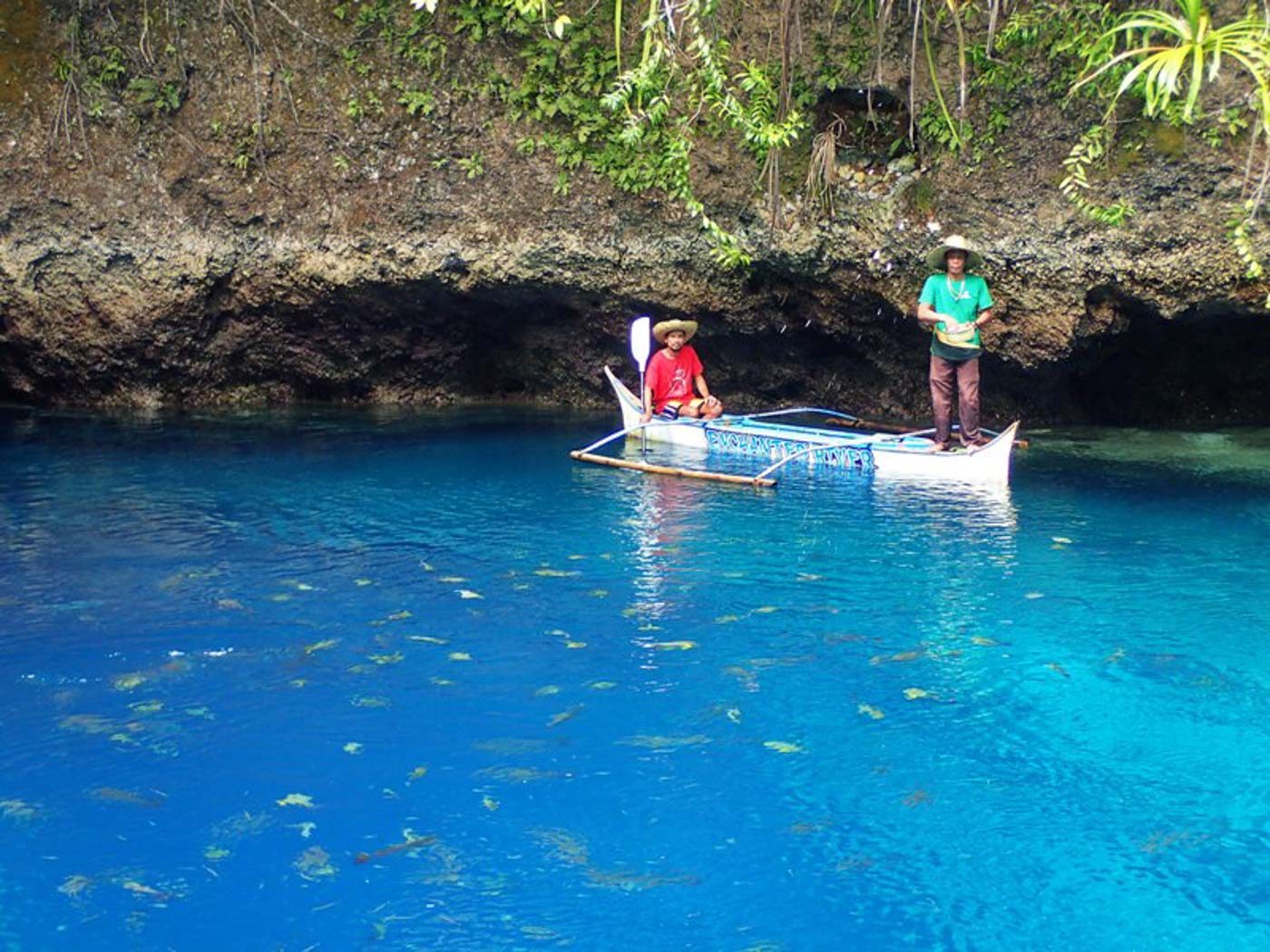
Technical divers found mysteries in the river too. They have so far dove for 87 meters into the underwater cave but have reported that the cave extends farther into unknown depths.
Long before the construction of roads to the river, locals have been swimming at the Blue Lagoon. Enchanted River Manager Nanito Bandola said that swimming in the river has been a part of his own and other locals’ childhoods, and also during celebrations like fiestas (local festivals).
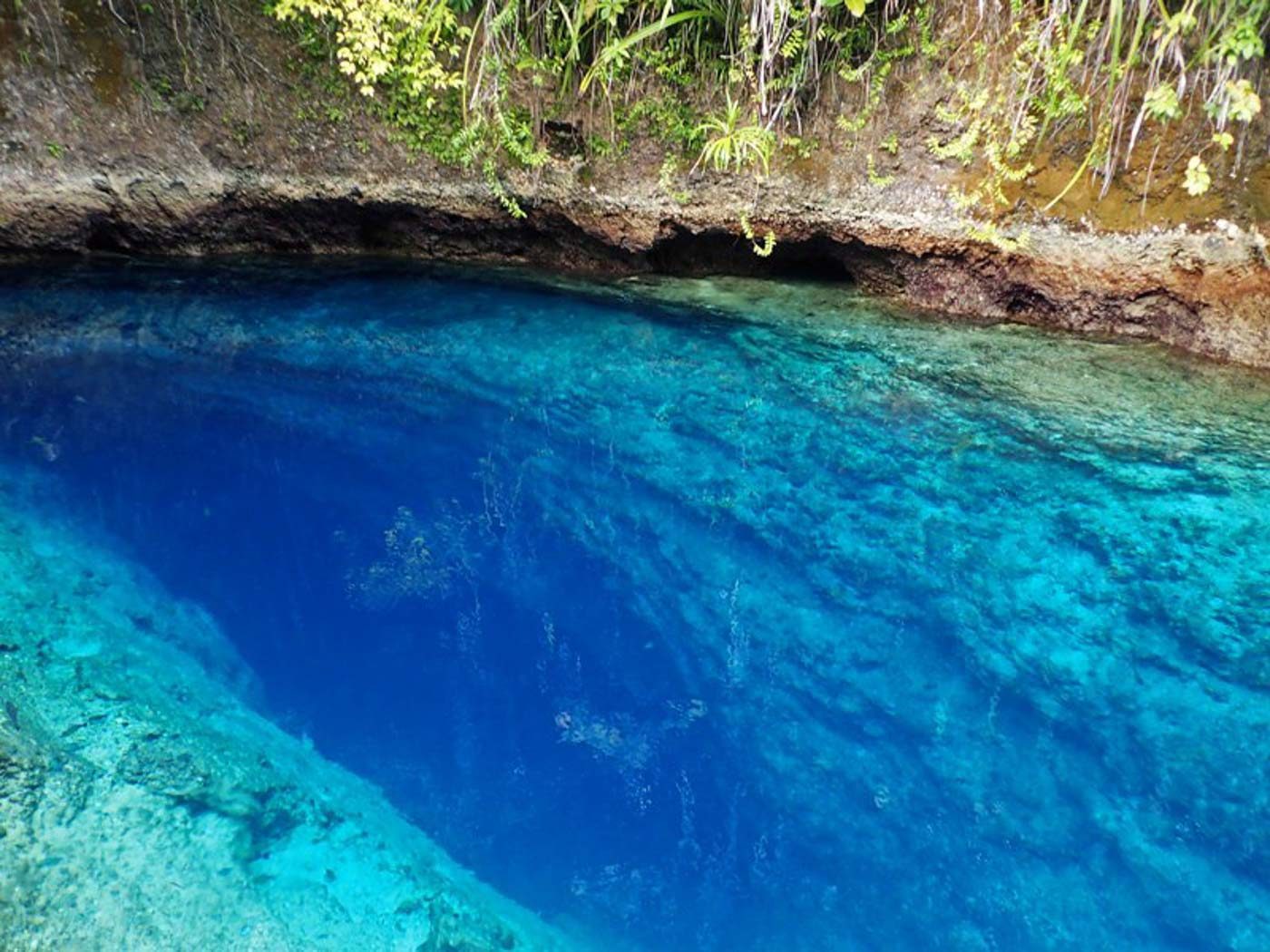
River under stress
Because of its naturally intense blues, the river became popular among tourists. Tourist arrivals especially skyrocketed starting 2015, when a concrete road was built to the river, improving access. From over 160,000 tourists in 2014, the number rose to over 200,000 in 2015, and doubled to over 300,000 in 2016. There are days when tourist arrivals reach 2000, and even 4000.
“The place was jam-packed, like full of swarming bees,” Marissa Manzano, president of the Hinatuan Tour Guides Association, recalled. “The stalls and the crowds were all packed in one area near the river.”
Hinatuan Tourism Officer Gemma Millan also said that for tourists, it can be frustrating getting a good shot with the iconic Blue Lagoon, as “there are a lot of swimmers appearing in your photo.”
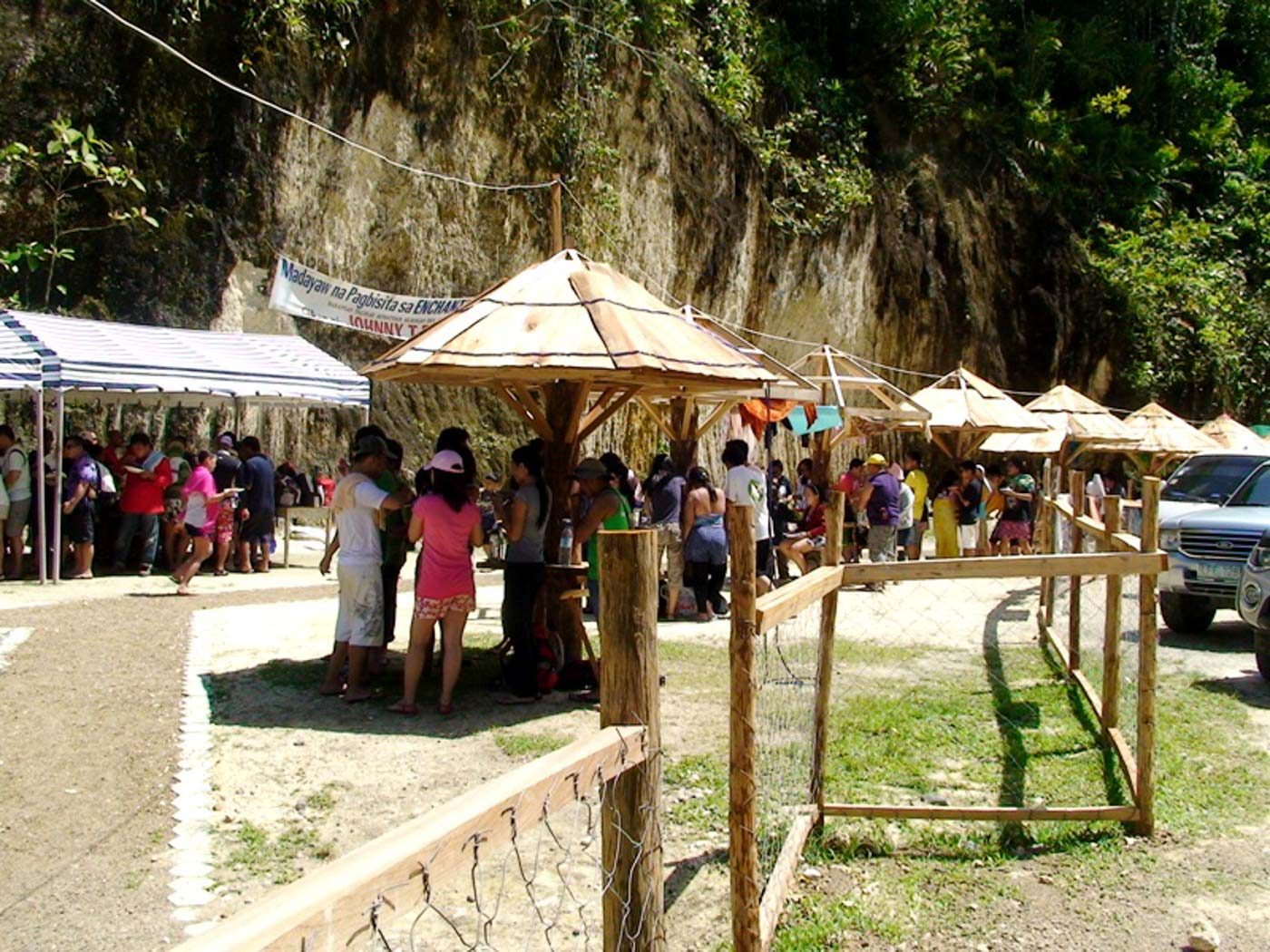
In 2015, the Filipino Cave Divers (FCD), together with scientists from University of San Carlos-Cebu, conducted a rapid assessment on the river and its cave system. Aside from documenting cave and river organisms, they also took water samples, whose results showed that total coliform levels are above the Department of Environment and Natural Resources’ (DENR) standard.
In fact, DENR’s own water quality monitoring results showed that the Blue Lagoon area did not pass the agency’s acceptable coliform levels, even in 2016.
The FCD, in its presentation to the Hinatuan local government and other Enchanted River stakeholders, raised the concerns of developments like the parking lot placing pressure on the cave system underneath, and also of swimming in the Blue Lagoon causing erosion, letting loose limestone fall into the cave, which reduces water flow.
The FCD made recommendations like limiting the number of people per day, increasing the entrance fee, and developing other tourist attractions to divert tourists to other locations.
The Hinatuan local government also received advice from the Department of Tourism to protect the Enchanted River.
“We were shown the ugly side of mass tourism,” Municipal Development and Planning Coordinator Ferdinand Barrios said. “In some countries, for example, the locals don’t want tourism anymore. There are also problems of garbage and more. We don’t want Enchanted River to suffer the same route.”
Community river rehabilitation
In a bold move, the local government closed the river to tourists from January to early March 2017.
During the closure, the local government and community cleaned the river and its surrounding areas, and moved the parking, food stalls, and other facilities to another site at least 300 meters away from the river.
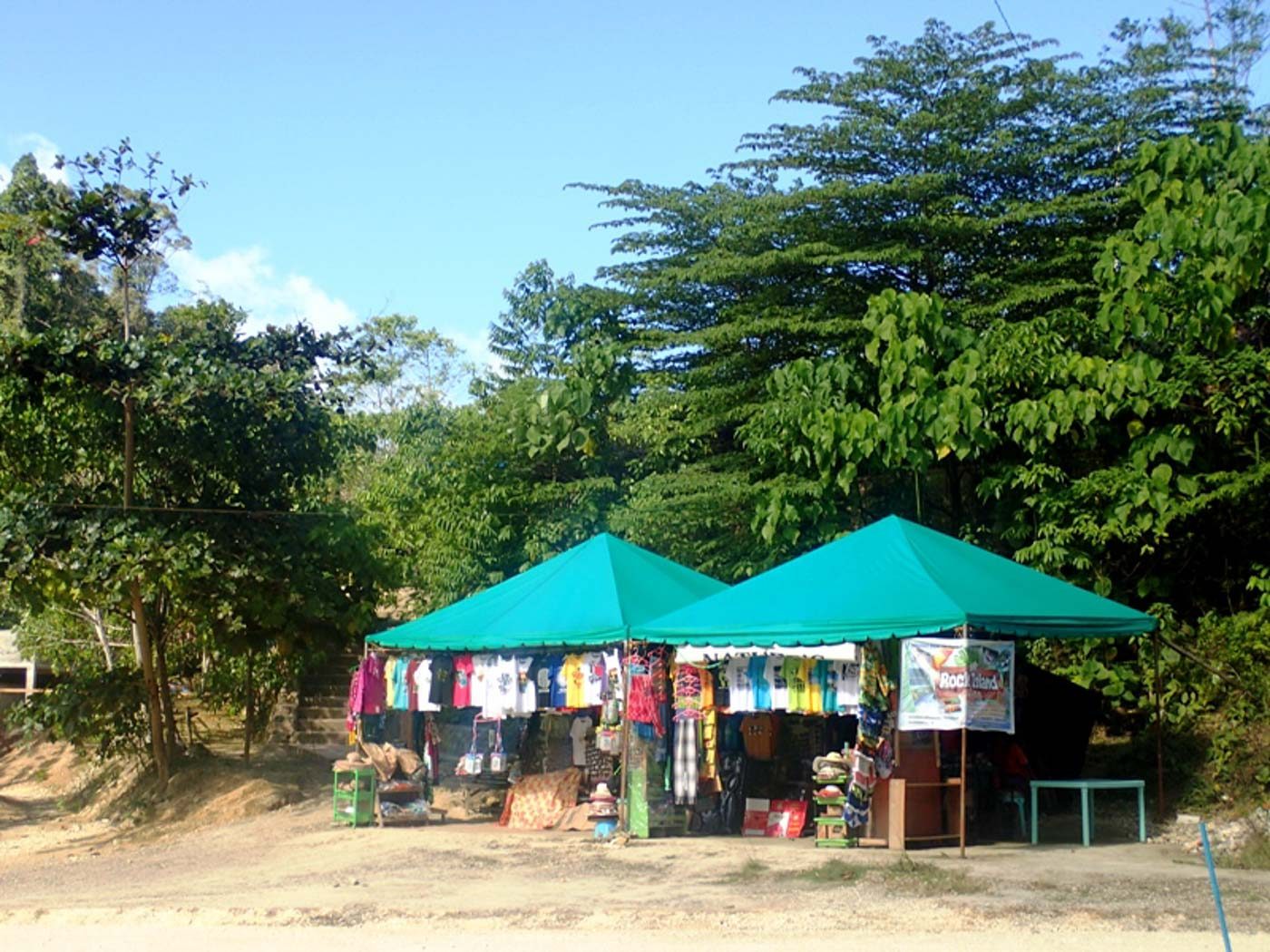
Having met and consulted with stakeholders like the river’s food vendors and pump boat operators at the mouth of the river prior to the closure, the local government was able to gain their cooperation.
Some of the river vendors whose incomes were directly affected by the closure were hired by the local government to do rehabilitation work like picking up trash and dredging loose limestone from the river.
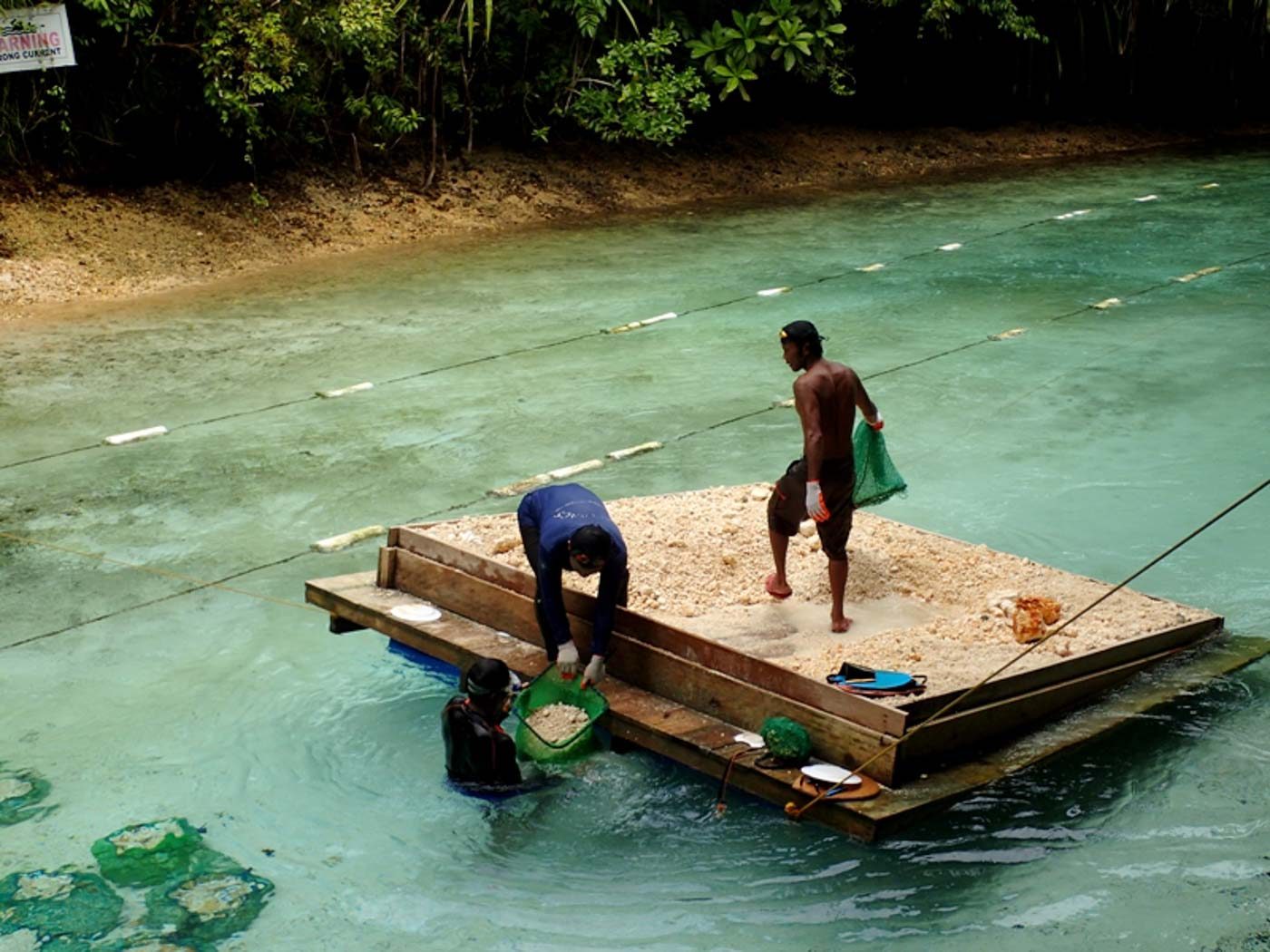
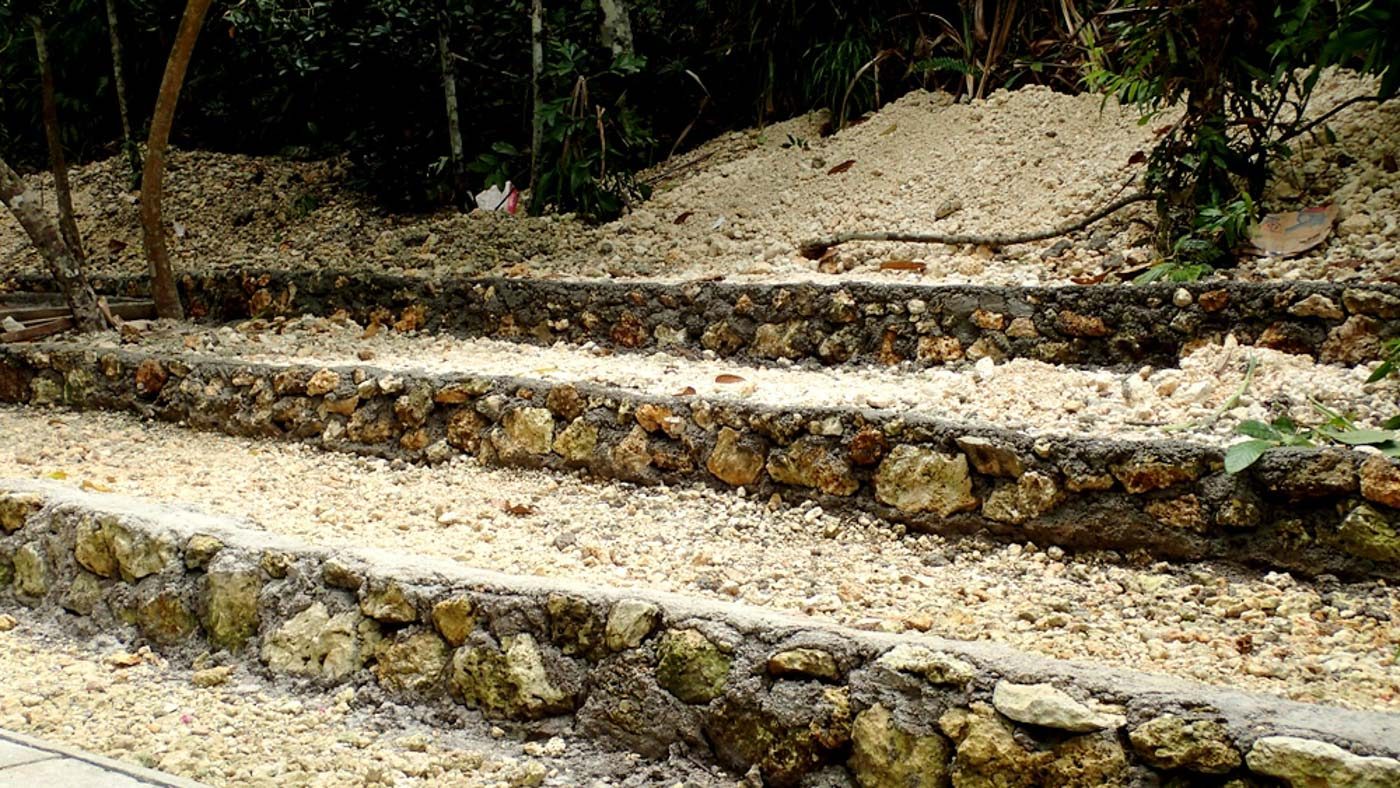
Other vendors, according to Hinatuan Enchanted River Vendors Association President Emma Villegas, took their services to resorts near the Enchanted River.
“Though they were affected by the closure, they understood,” Villegas said of her fellow vendors. “It was explained to them that the river and the facilities will be better after rehabilitation, and this will be good for their livelihood in the long run.”
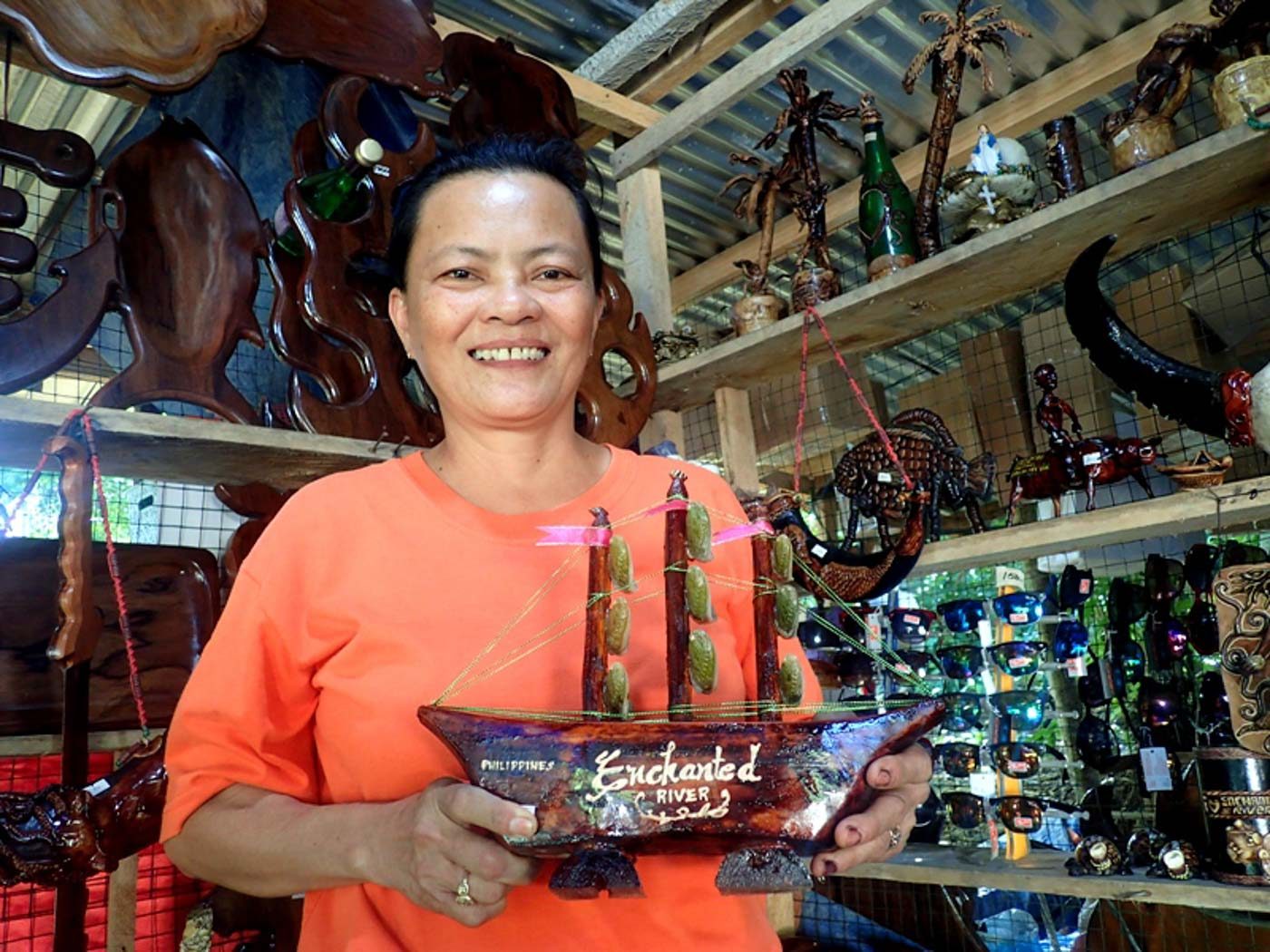
During the closure, the local government also took the opportunity to train the vendors further in food handling and customer servicing. “Before, the vendors did not have time for trainings because they could not leave their store,” Millan observed. “But when the river closed, they had the time to train.”
Meanwhile, the pump boat operators, with the help of the local tourism office’s promotion, diverted tourists to island hopping destinations, with Enchanted River usually as the jump-off. Fedelina Bagwasan, president of the river’s pump boat drivers’ cooperative, said that those not on boat trips also helped with the dredging of limestone during the river’s rehabilitation.
Dredging is now done as part of regular river maintenance.
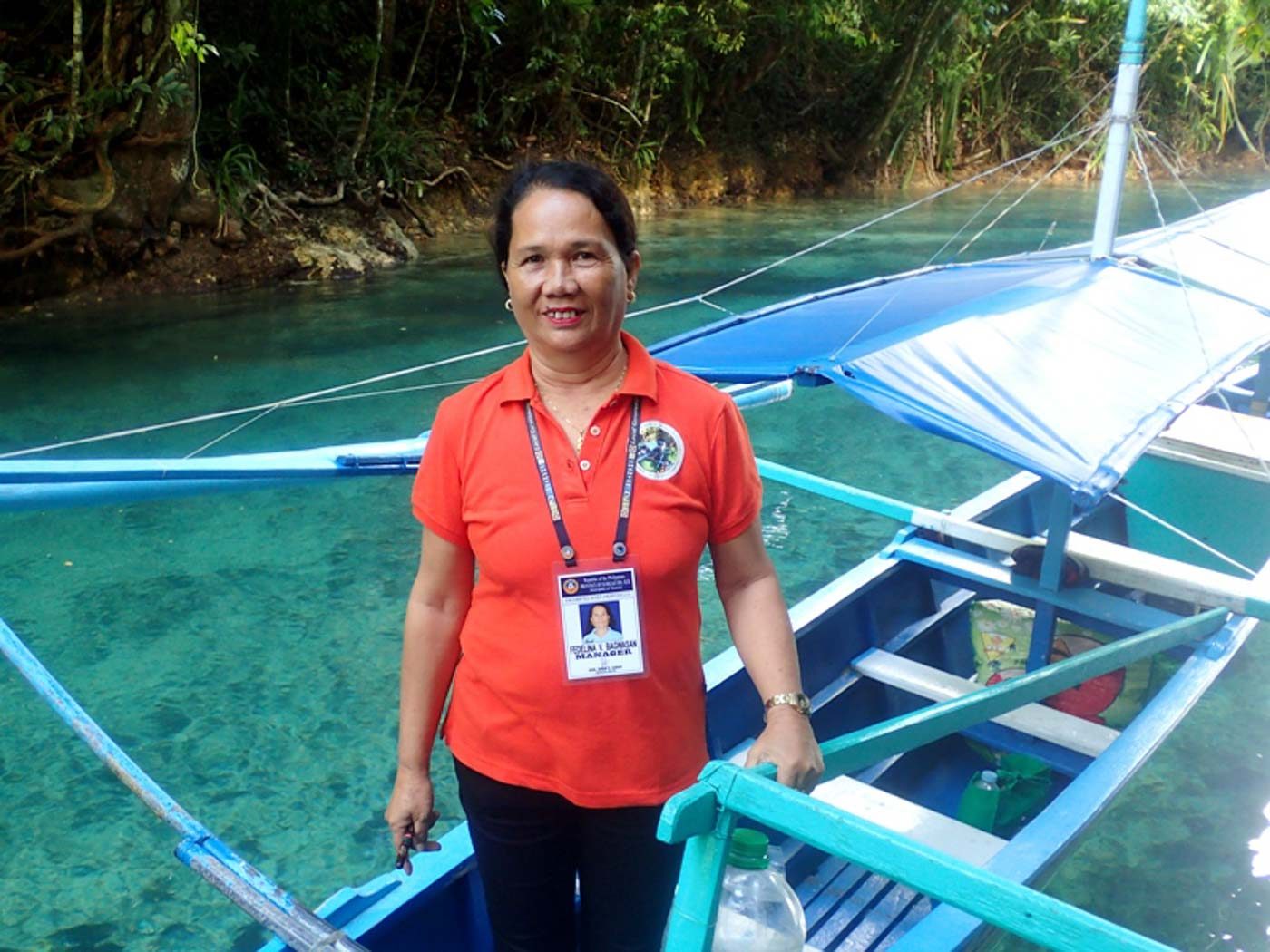
New rules and facilities
Upon re-opening the river after over two months of closure, the local government prohibited swimming in the Blue Lagoon. A swimming area extending near the mouth of the river to accommodate more tourists was lined with ropes and floaters.
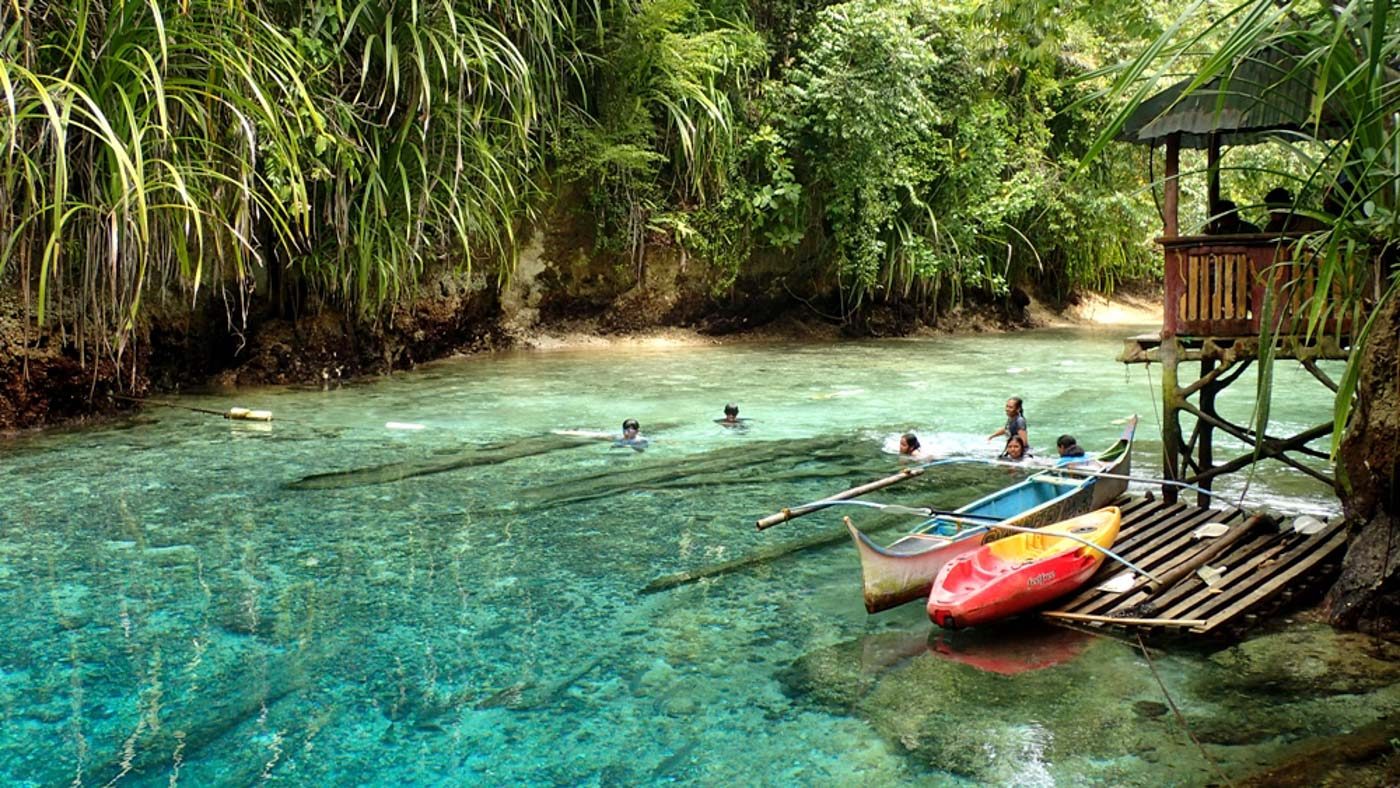
Over 300 meters away from the river area is the parking lot, and other facilities in designated areas for the wet market (where fresh catch are being sold for cooking), readily cooked food, dry goods, and a dining area.
There is also a separate area for souvenir stalls. The restrooms here are where tourists can wash up after swimming in the Enchanted River.
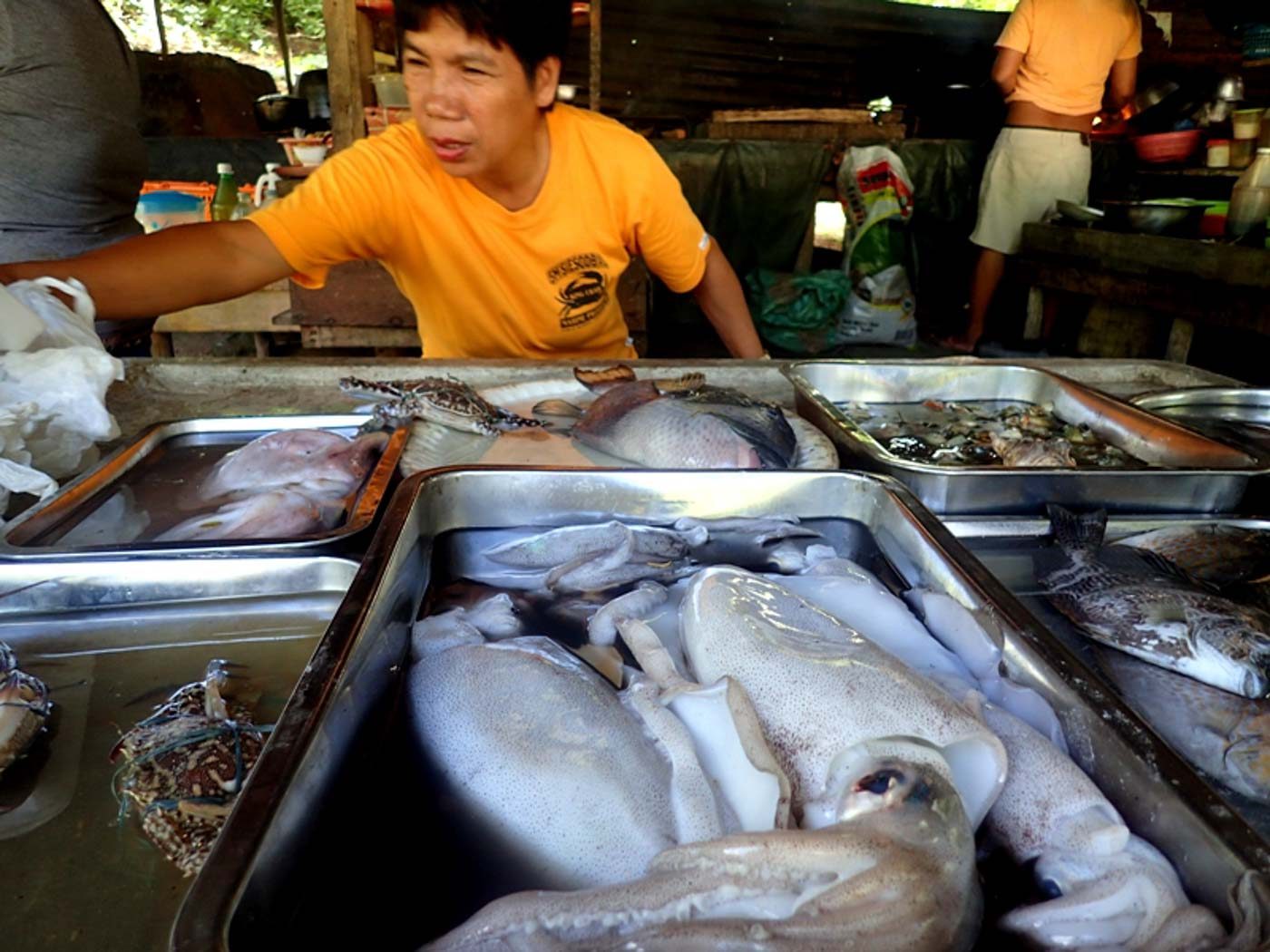
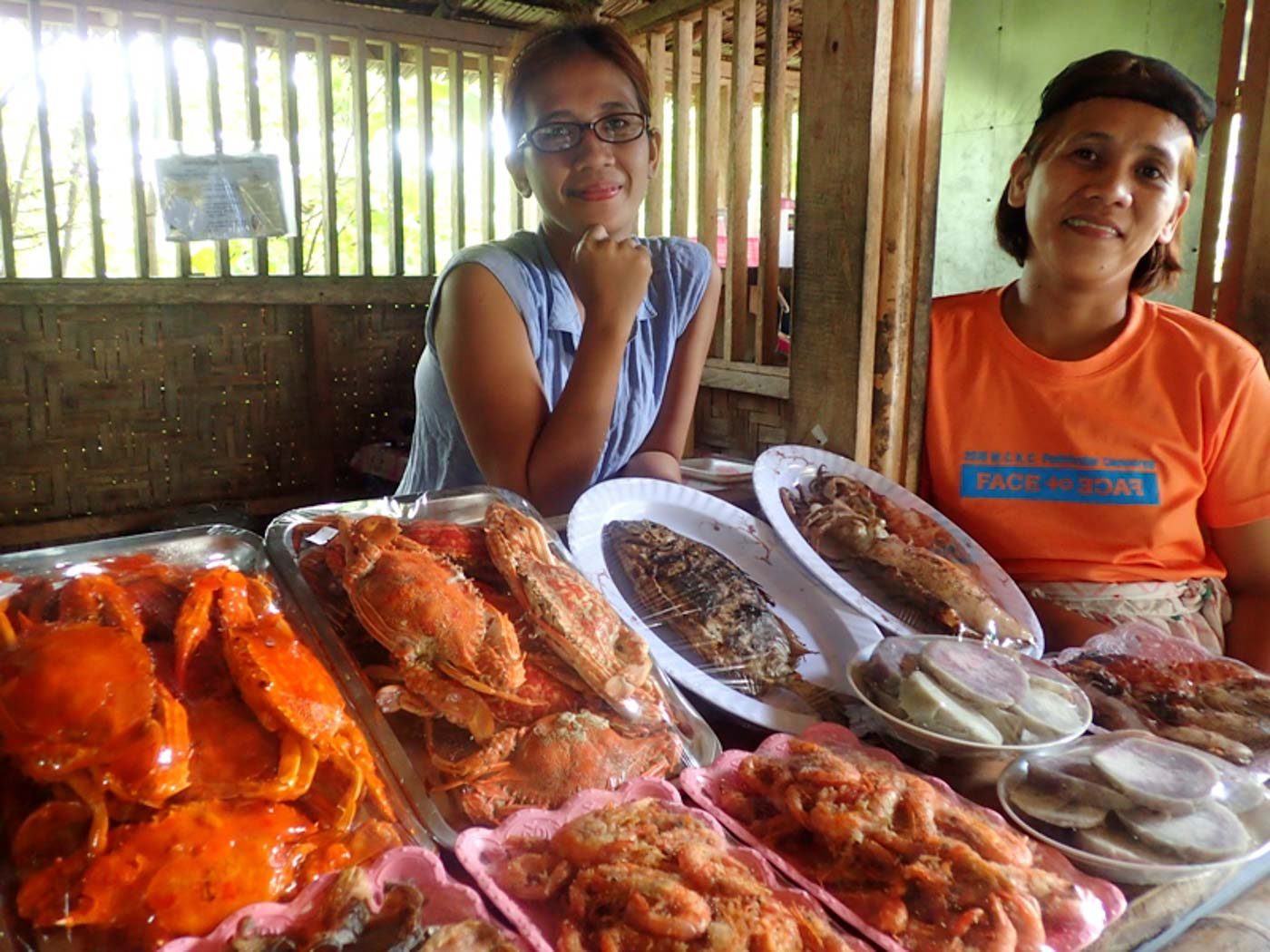
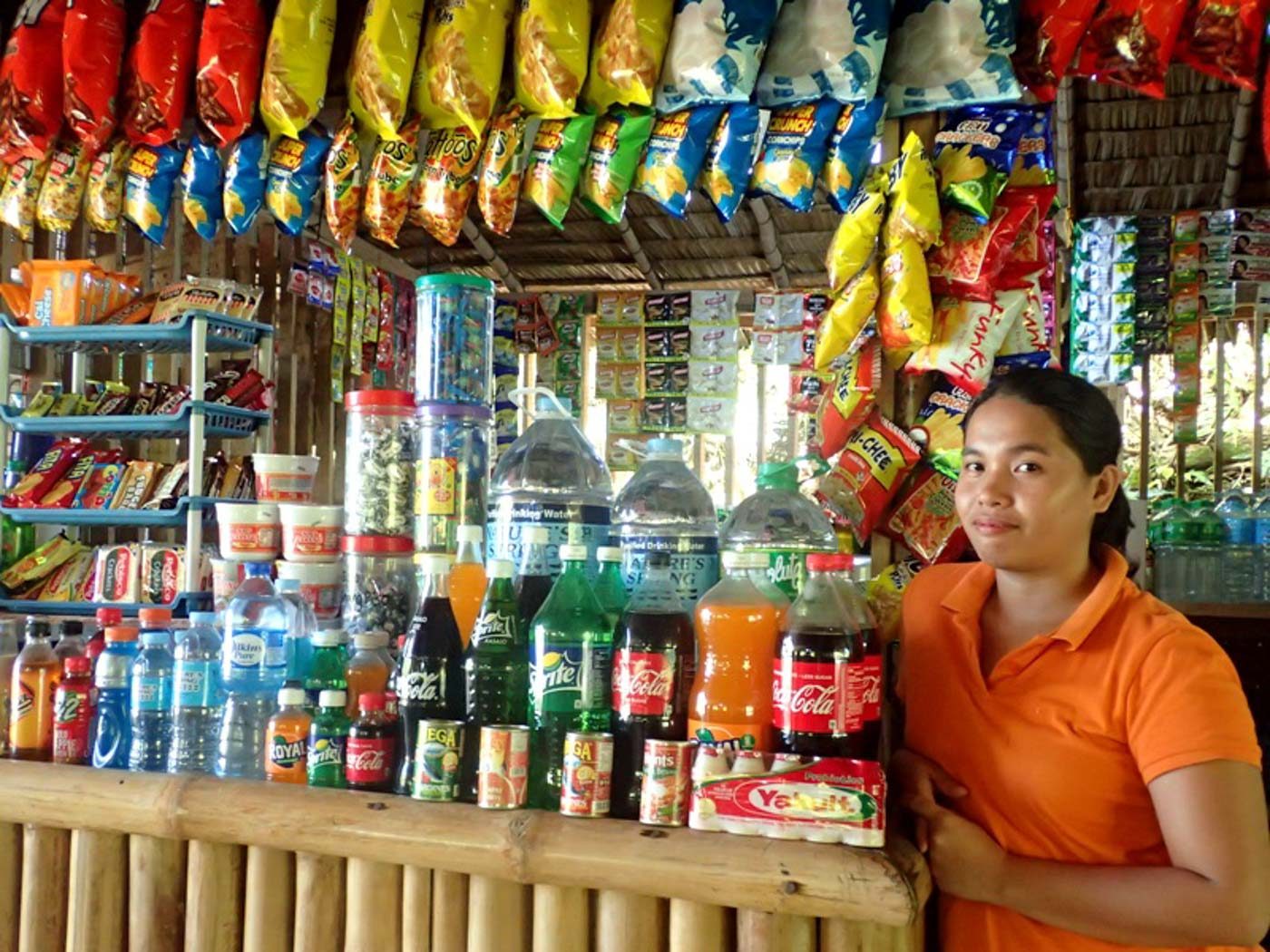
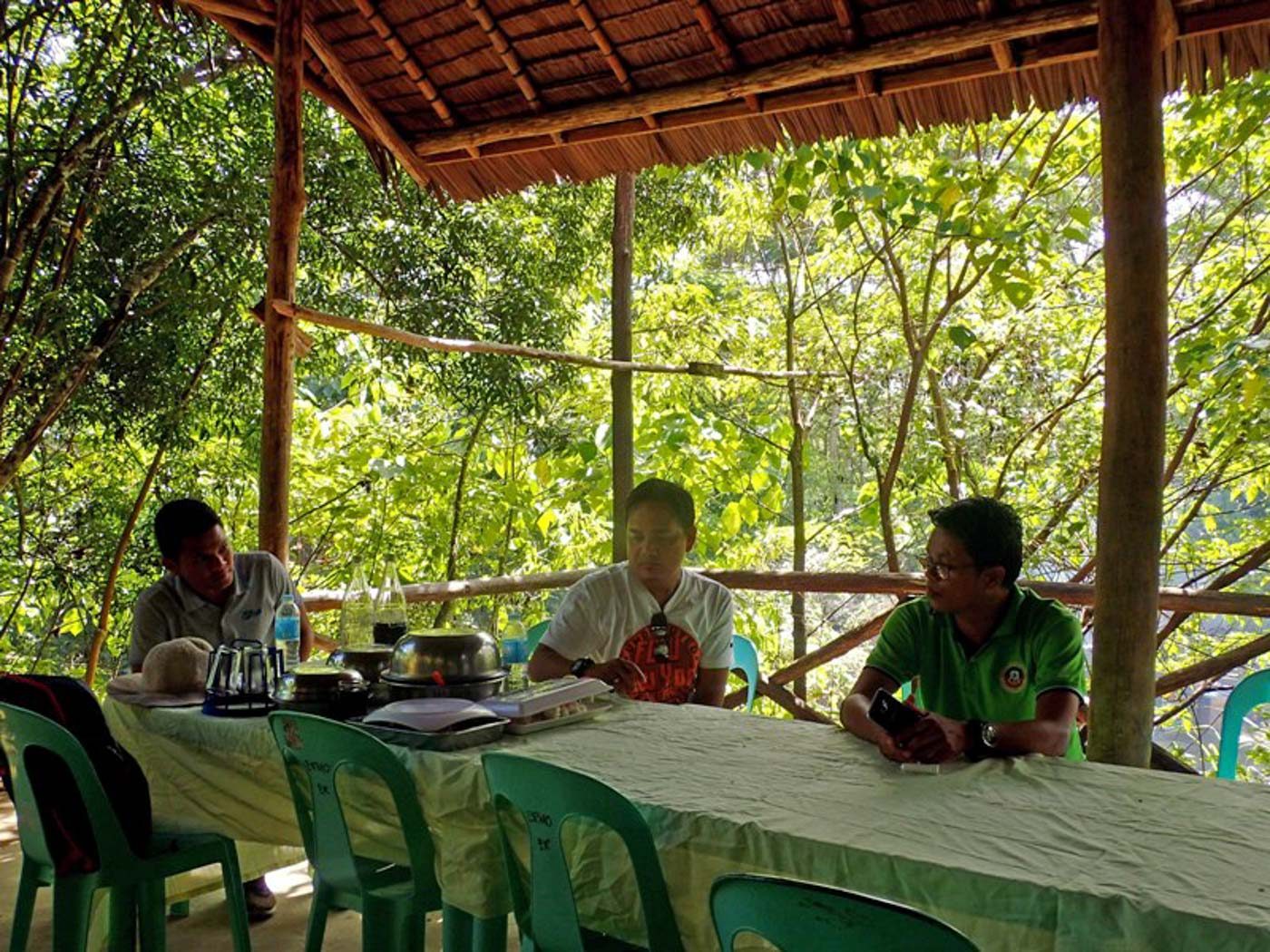
In this new, spacious area is where tourists will pay the slightly increased P40 entrance fee. All tourists are also required to attend a briefing on what to expect at the river as well as dos and don’ts. They can then walk to the river under the shade of native trees. Seniors, persons with disabilities, and pregnant women can take the free shuttle to the river if they wish.
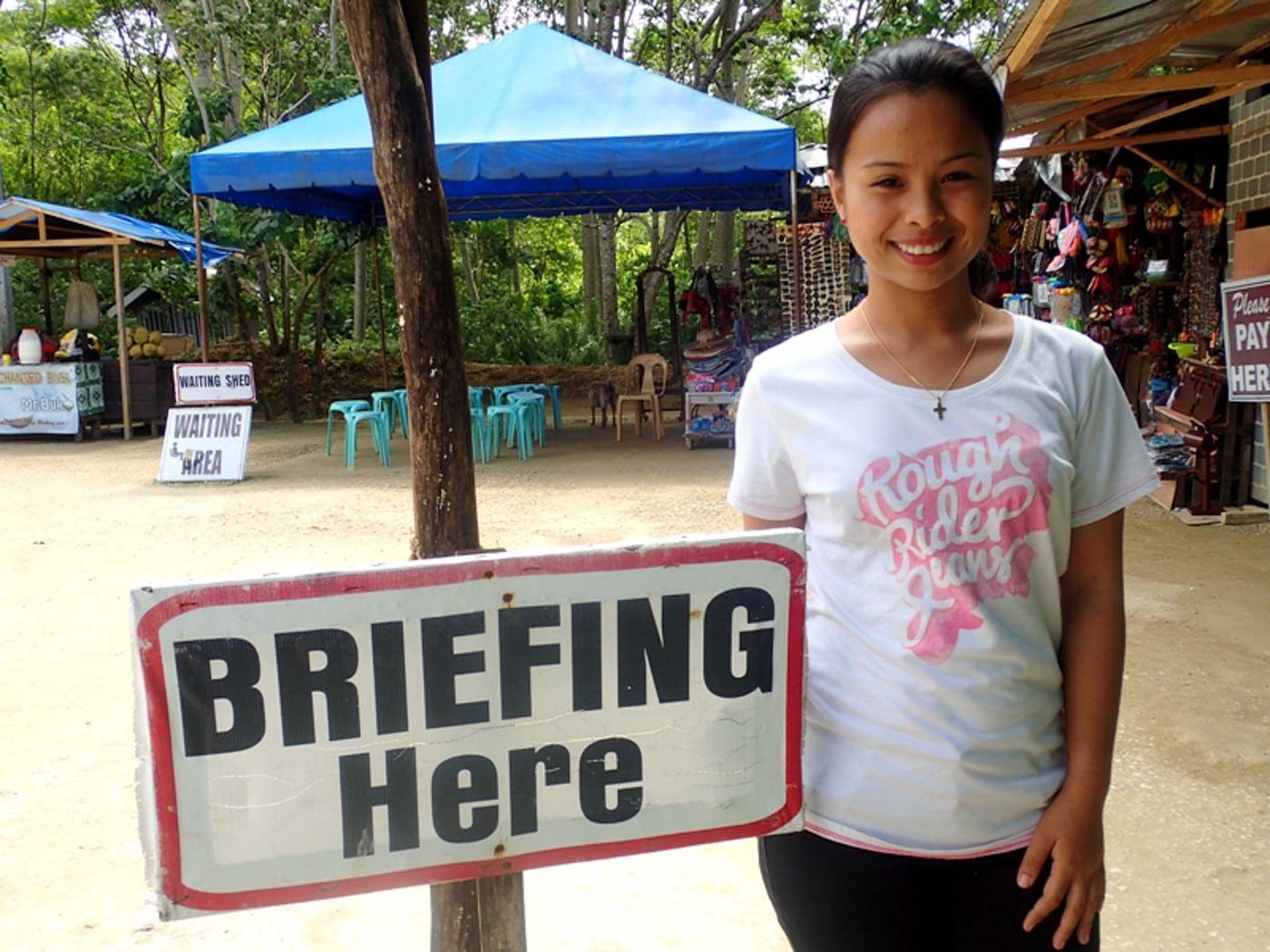
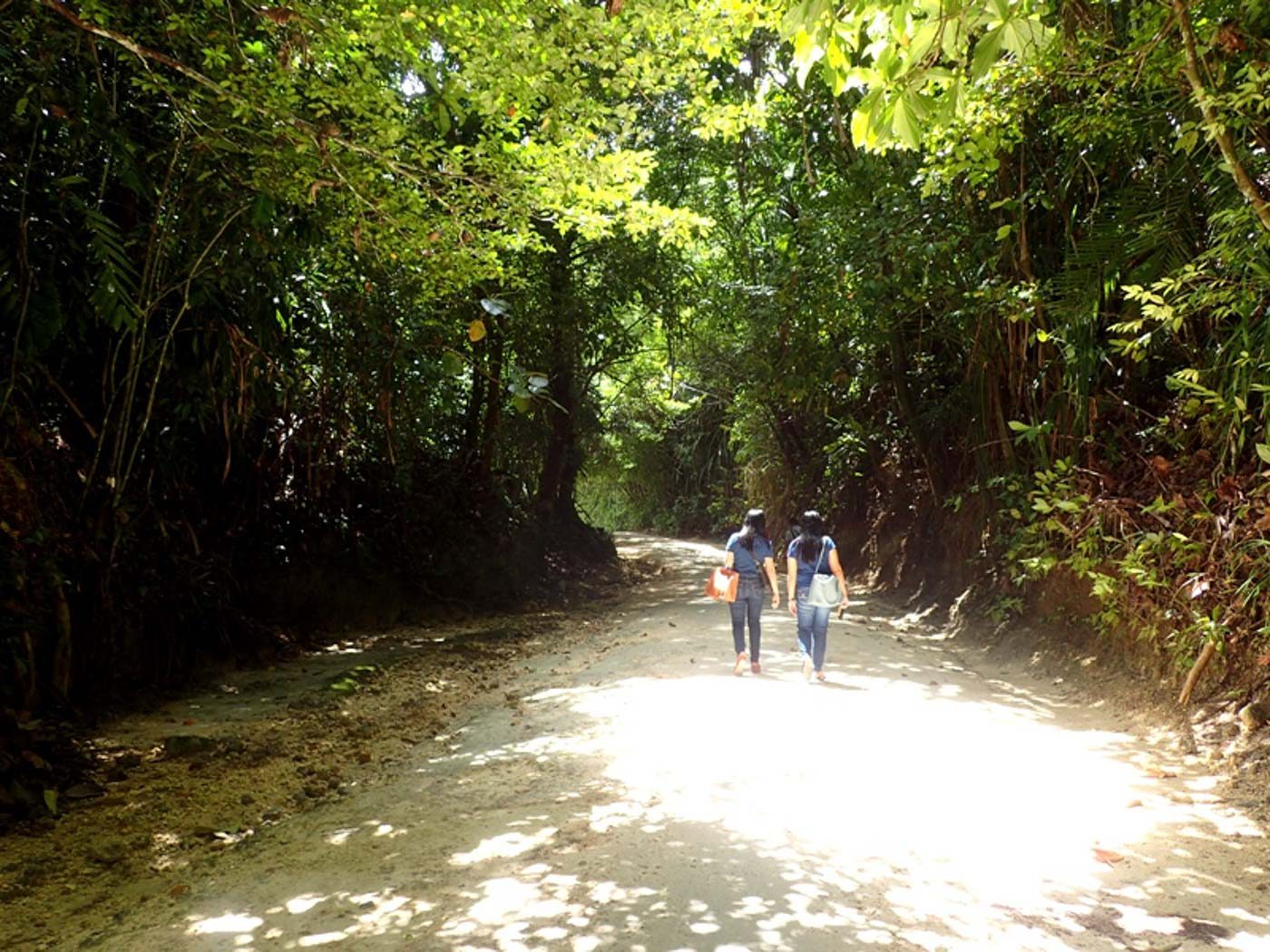
Once in the river, they can leave their bags at a free baggage area. They can only bring drinks to the river and no food, as the river is now only for sightseeing and swimming. Life vests are required for swimming. The restrooms in near the river area, meanwhile, only have toilets and no bathing facilities.
To lessen runoff to the river, bathing is only allowed in the restrooms at the ticketing site around 300 meters away. Bandola also said a catchment and drainage was built to make sure any runoff does not go directly to the river.
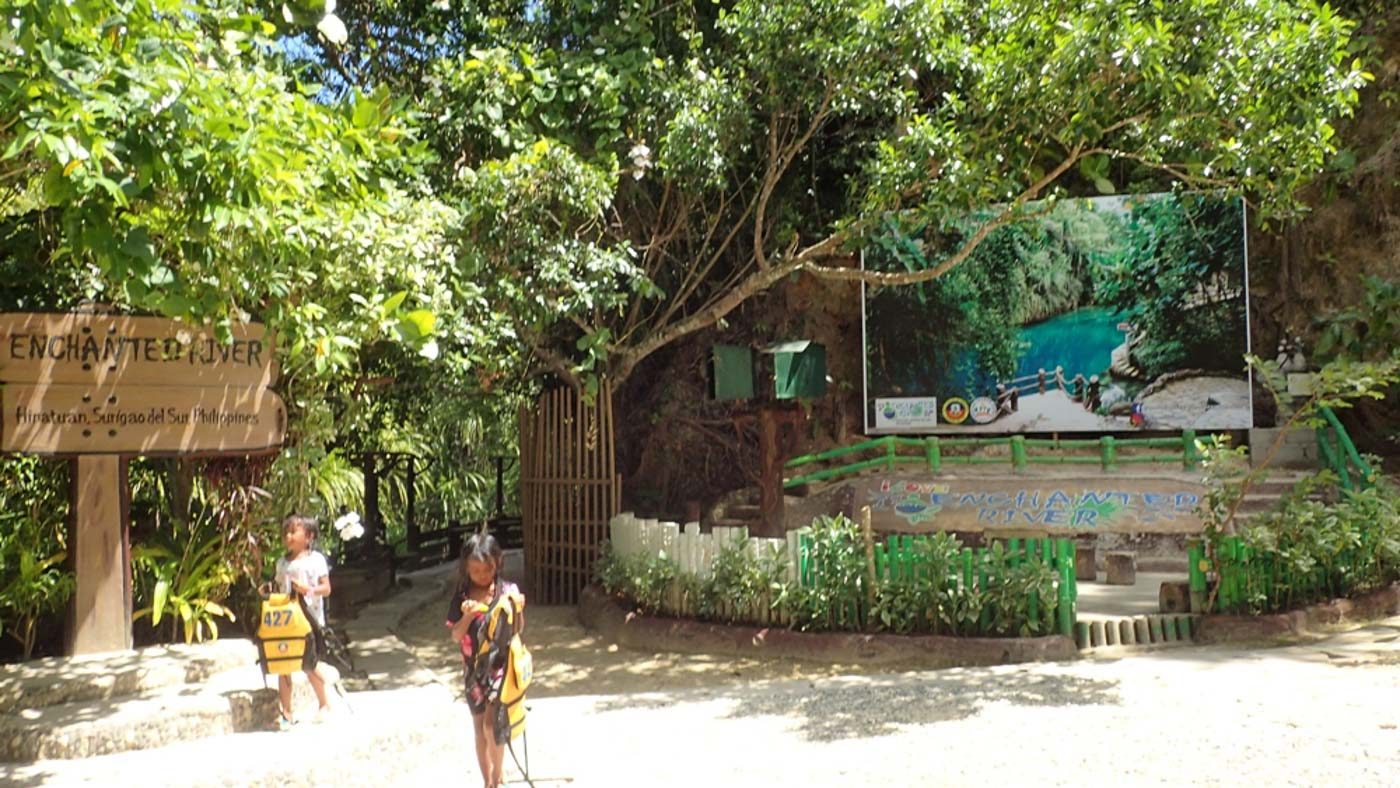
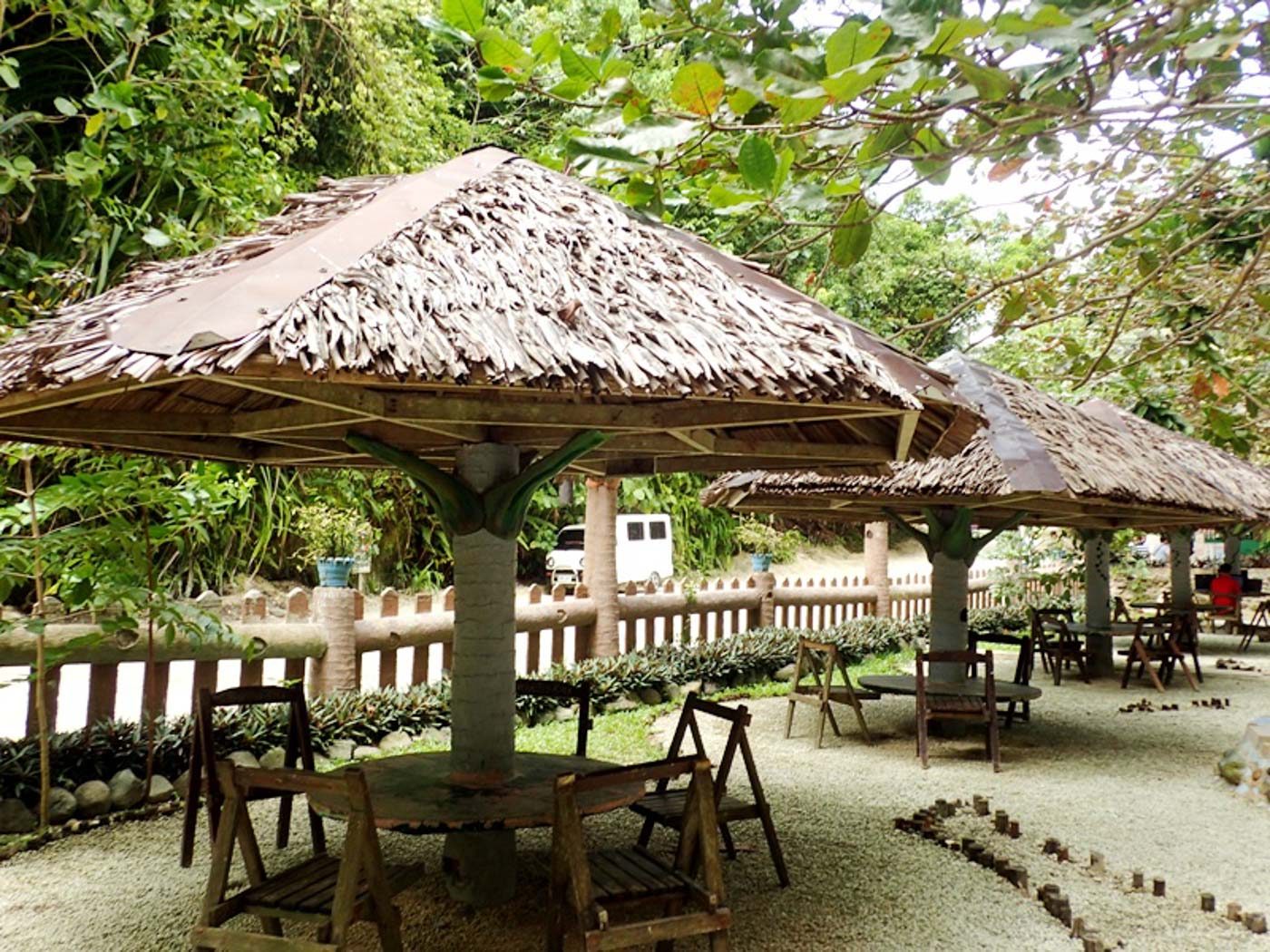
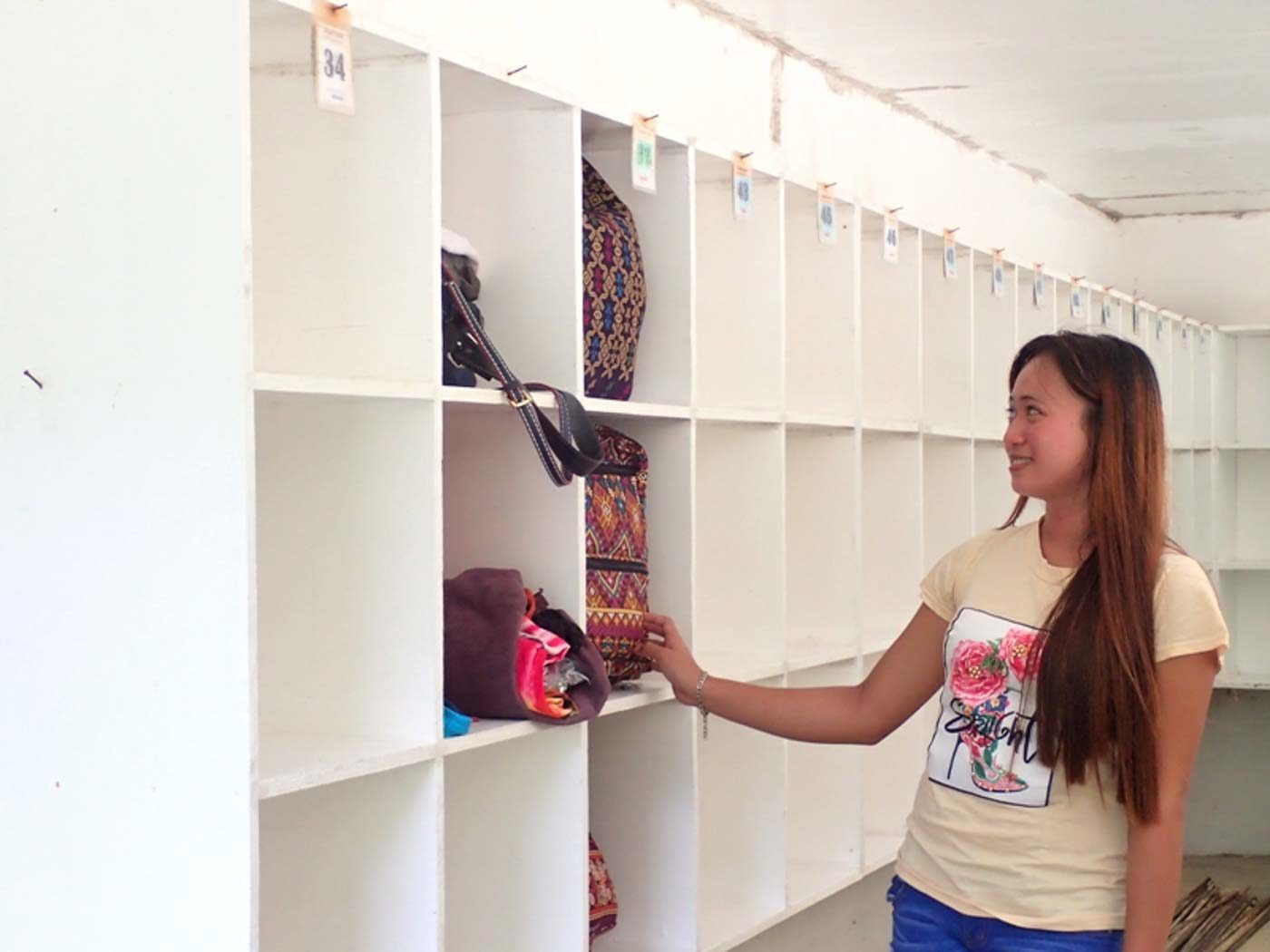
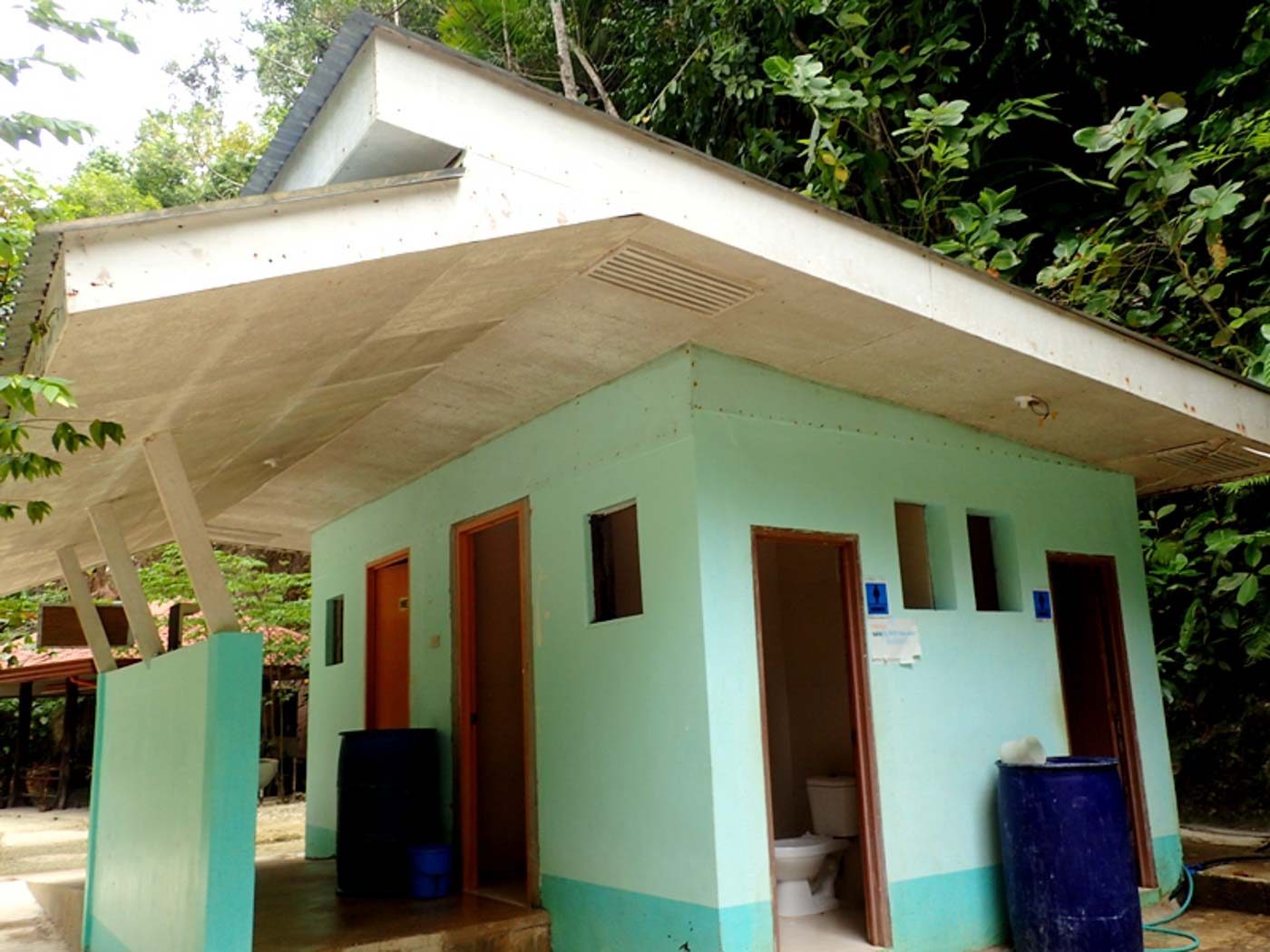
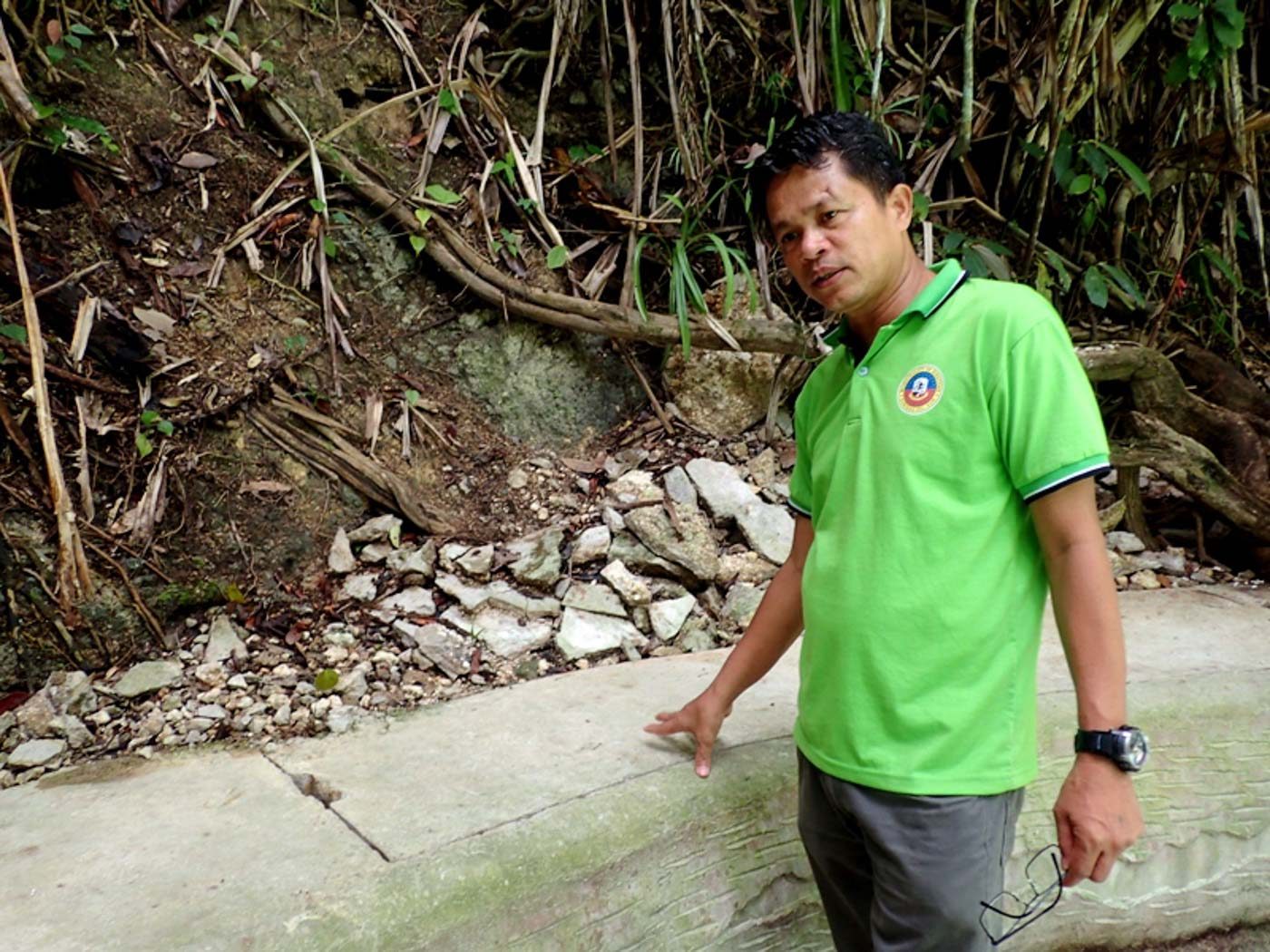
The local tourism office is also promoting island hopping from the mouth of the river to let tourists see attractions beyond the Enchanted River.
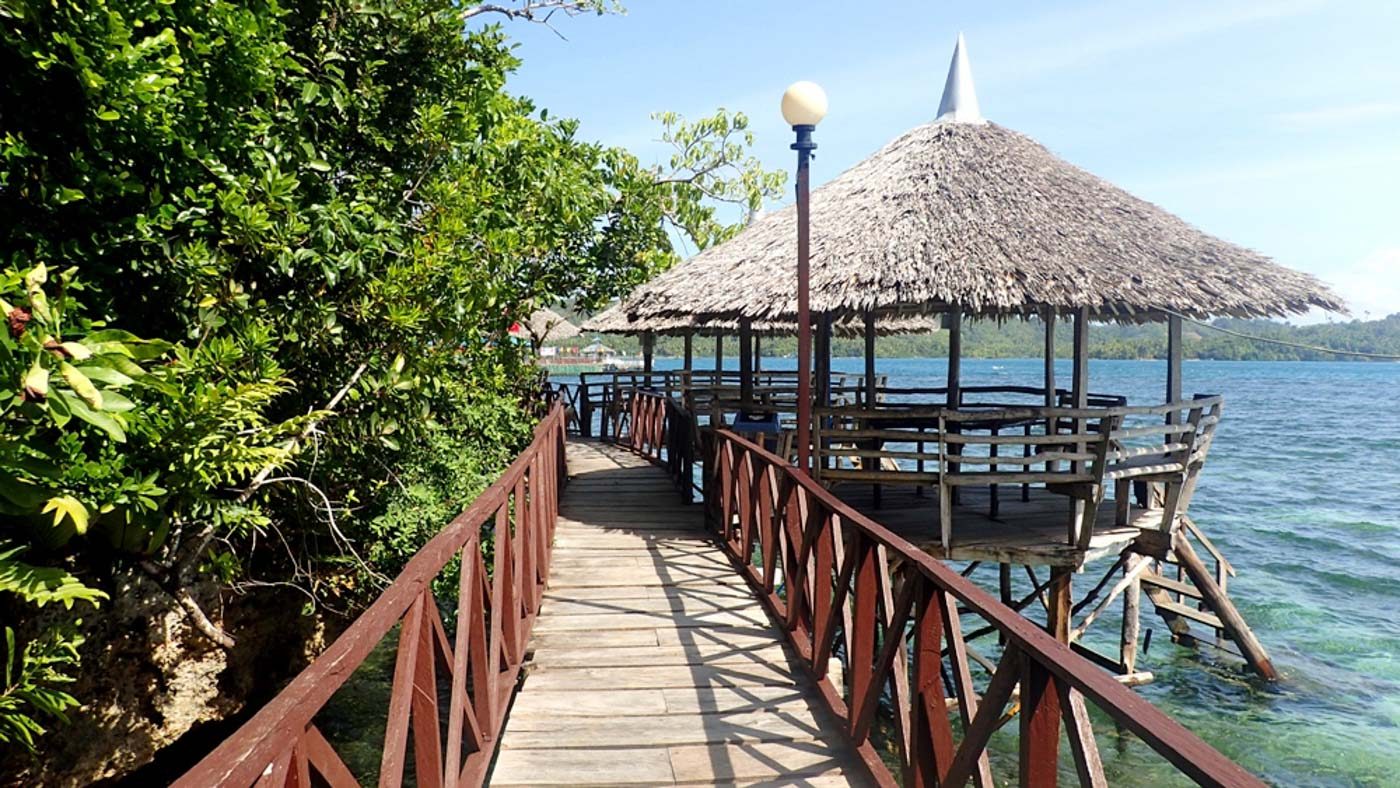
Even during peak seasons, the number of tourists is manageable given the bigger space, different areas, and the different activities they can do, including island hopping, Millan said.
At first, there was resistance to the new rules, especially among local tourists used to swimming at the Blue Lagoon and eating near the river. The local government, however, kept the new rules.
“You want everyone to be happy, but in reality there are people who will be affected,” Garay said. “That is true especially in environmental conservation.”
The local government, however, listened to feedback and made adjustments when possible, like relaxing the rule requiring life vests, as many swimmers protested this.
“Eventually, the people got used to the new rules and recognized the improvements,” Bandola said. “Initially, satisfaction rate was 30% among surveyed tourists. Now it’s over 70%.”
A “bluer than blue” river
The local government and the community’s efforts paid off. The Blue Lagoon area has now passed the DENR’s standards for acceptable coliform levels.
Repeat tourists Manzano guided to the river were happy with the changes.
“They say visiting the river is now a more refreshing experience, as the area is more spacious,” she said. “They can also easily take pictures with the Blue Lagoon now with the no-swimming rule.”
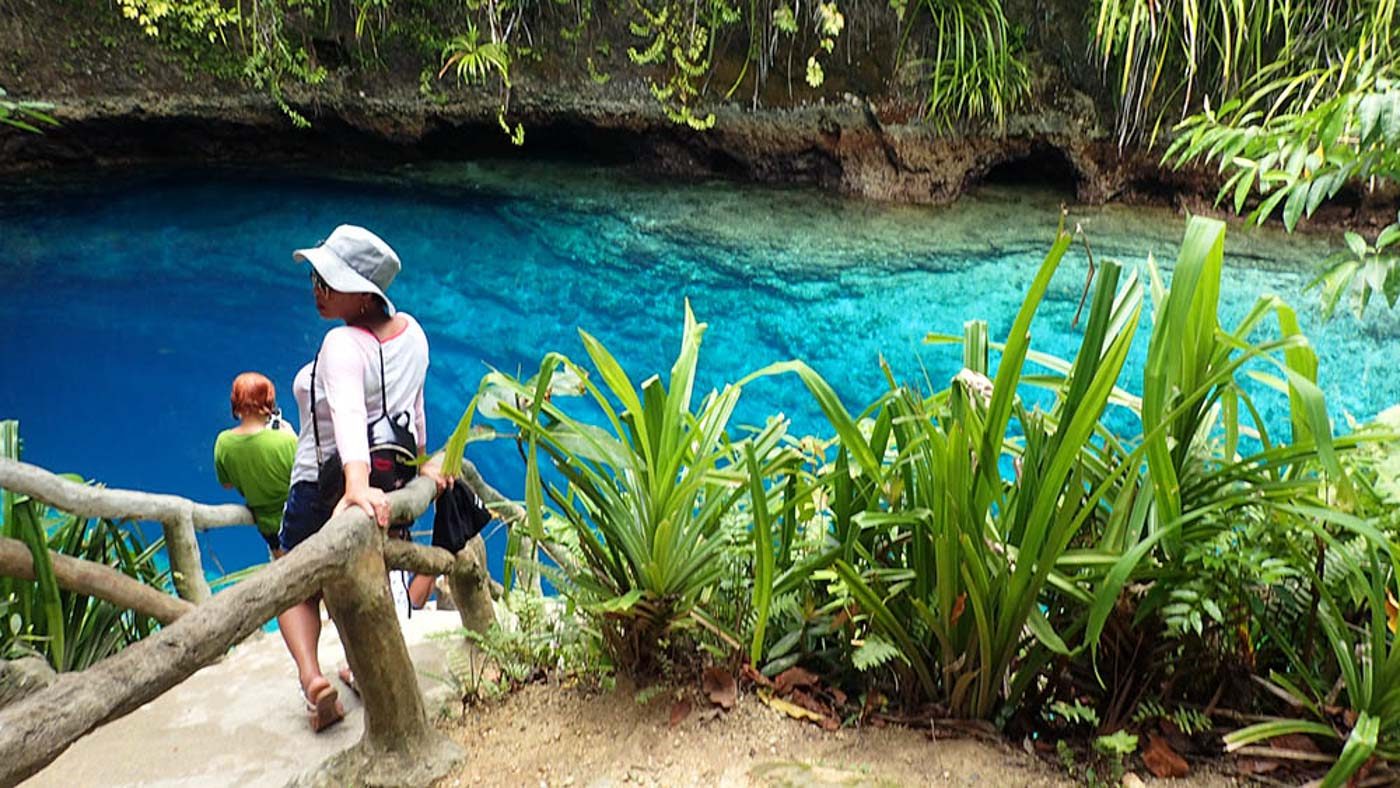
Emma Corpuz, a traveling sales agent who has been to Enchanted River a few times, said that she appreciates the improved facilities. “I was really surprised at the changes when I visited again,” she said. “It’s good that the river is being preserved.”
Some locals, including the mayor, claim that the river now looks bluer than before. Some say the blue now is close to its state before the influx of tourists.
Oranza, who is at the river daily, reports that now, some of the river’s blues are visible even during high tide.
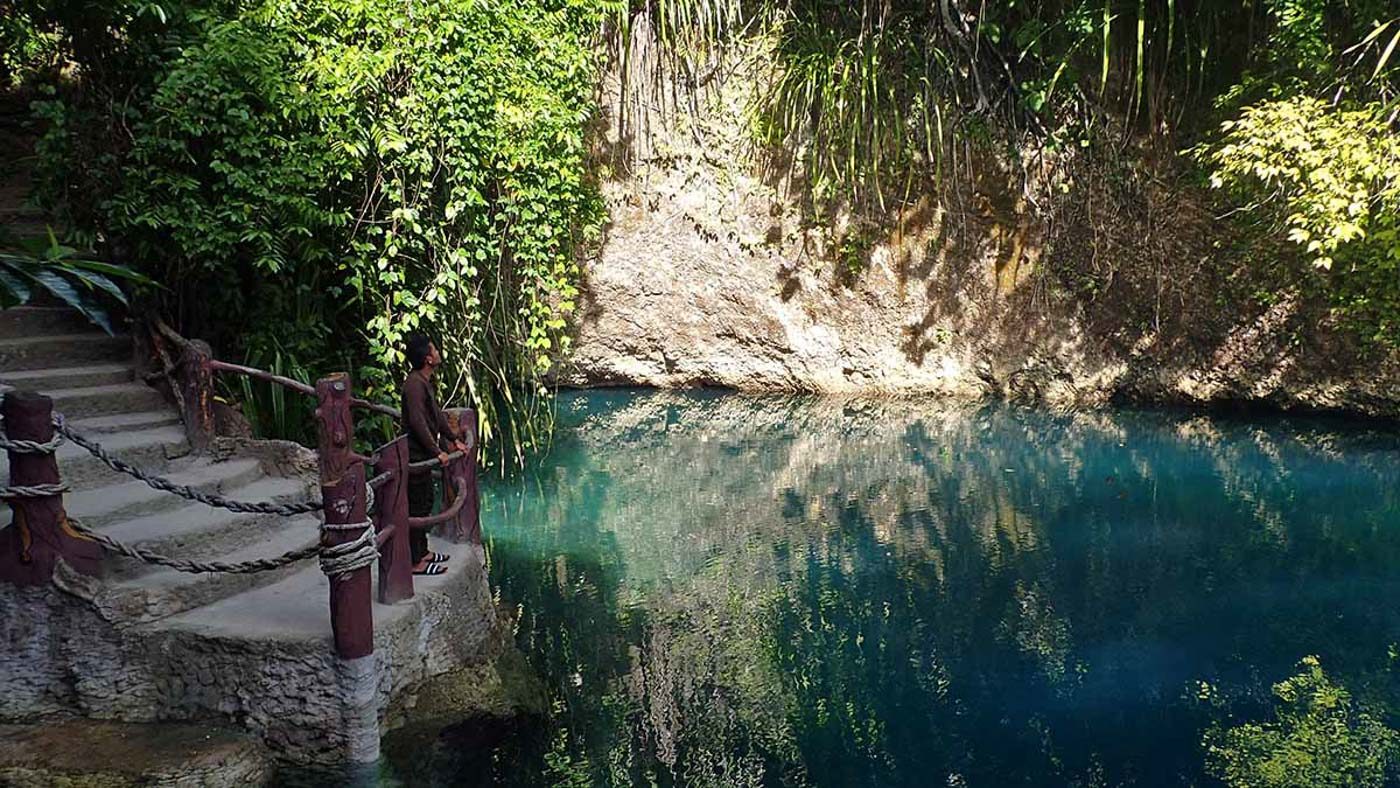
Barrios said the perceived bluer color may also be because of the significantly reduced coliform levels in the river.
The local community is adopting “bluer than blue” as its conservation slogan for the river, in its efforts to keep the river clean and blue, Garay said.
Part of the local government’s conservation plans, according to Barrios, is developing a master plan for the river, to be based on research and consultations with stakeholders. At the moment, immediate planned improvements are a further increase in the entrance fee and a facility for wastewater treatment so the runoff from tourism activities won’t affect both the river and the sea.
“We want the river to still be beautiful and enjoyed by many 50, 100 years from now,” Millan said. – Rappler.com
Wondering what the Enchanted River looks like in person? Book a trip to Surigao del Sur using this Zen Rooms Promo code.
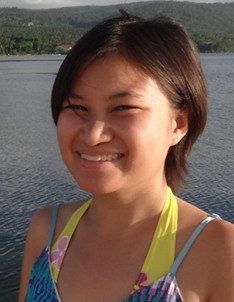
Claire Madarang is a writer, researcher, and documenter whose work and wanderlust takes her to adventures like backpacking for 7 weeks and exploring remote islands and bustling cities alike. Follow her adventures, travel tips, and epiphanies on her blog Traveling Light and on her Instagram.
Add a comment
How does this make you feel?
There are no comments yet. Add your comment to start the conversation.